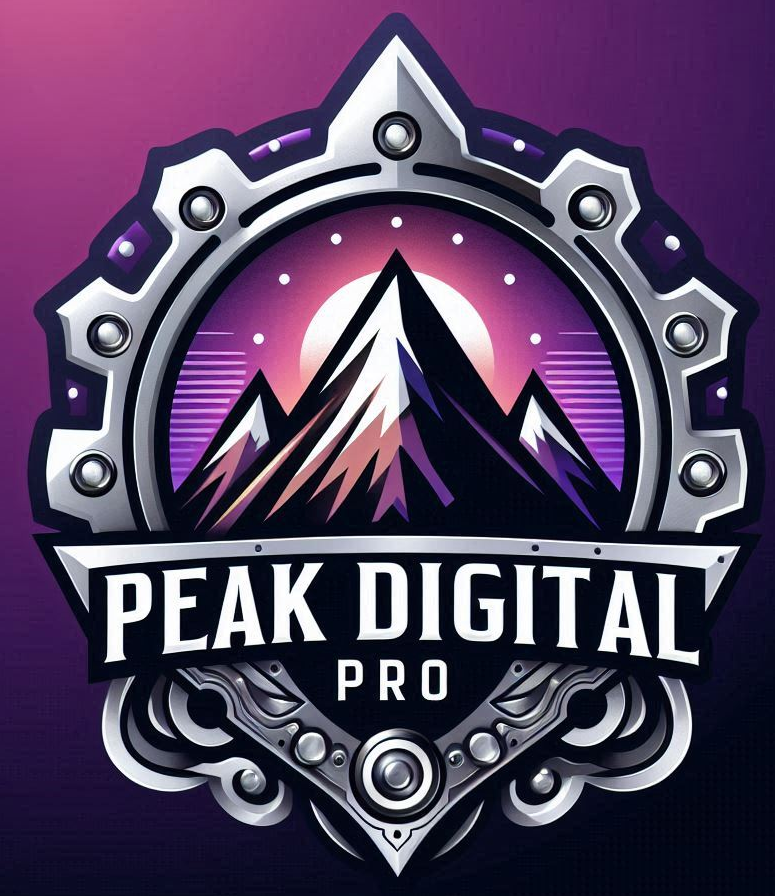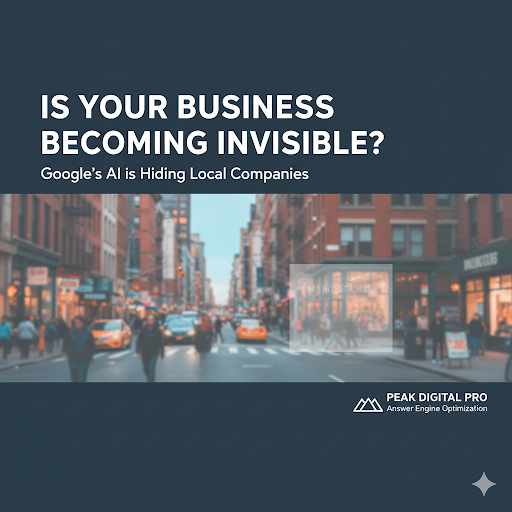Website Footer Optimization Tips for U.S. Businesses in 2025
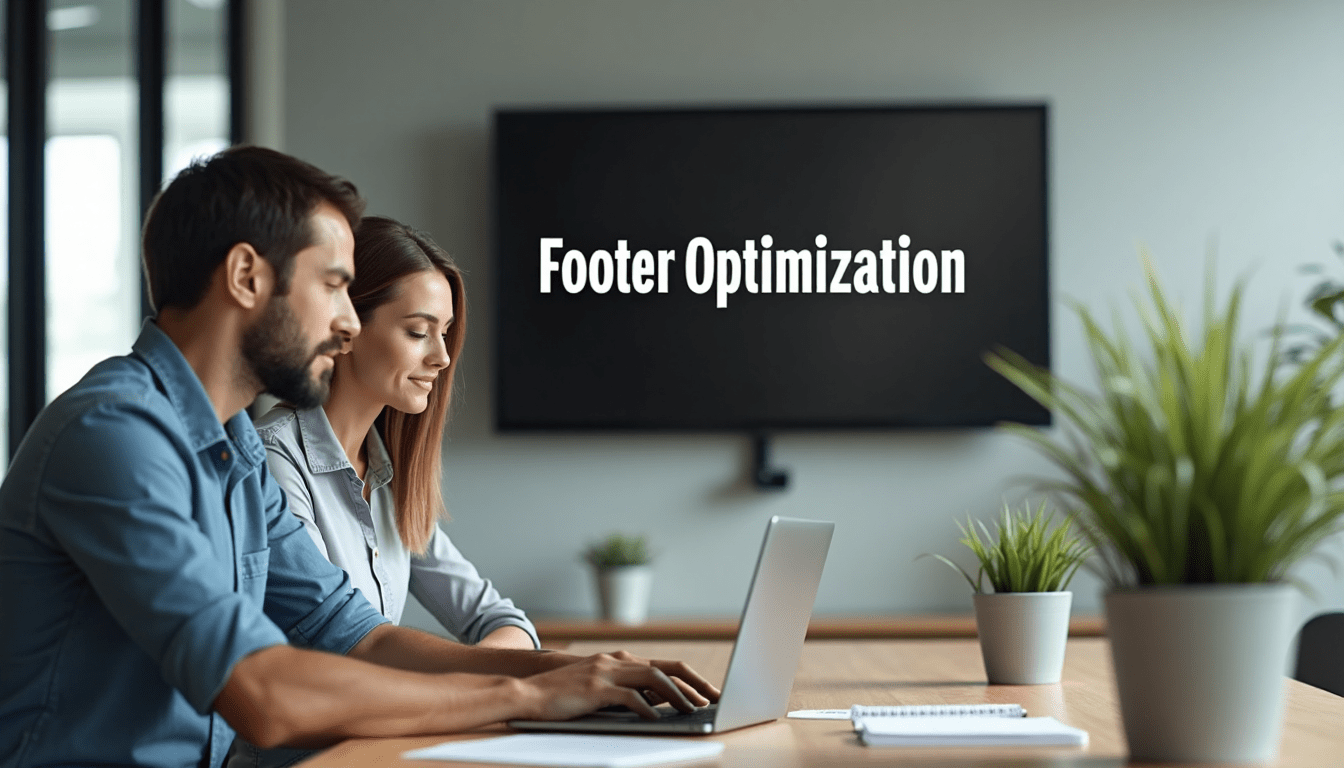
Most businesses barely pay attention to their website footers, yet this small section can make or break online engagement. Surprise fact. Businesses displaying consistent local footer information report up to 50 percent higher user trust and engagement rates. The kicker is, your footer is more than a space for buried links or legal jargon. In 2025, it has the power to secretly boost your search ranking, connect with local customers, and tell your story better than your homepage ever could.
Table of Contents
Quick Summary
| Takeaway | Explanation |
|---|---|
| Optimize Footer for User Experience | A well-designed footer enhances navigation, reduces bounce rates, and improves overall user engagement by organizing critical information clearly. |
| Incorporate Local SEO Elements | For Colorado businesses, including precise location information and regional keywords in footers helps attract local customers and improves search engine visibility. |
| Avoid Overcrowding | Cluttered footers can overwhelm users, so it’s essential to maintain a clean design and limit excessive links to enhance usability. |
| Ensure Technical Efficiency | Footers must be mobile-responsive and adhere to performance standards to avoid slowing down page loading times and ensure accessibility. |
| Strategically Reinforce Branding | Use footers to communicate brand identity and trust through certification badges, social proof, and relevant content to build user confidence. |
Why Website Footer Optimization Matters
Website footer optimization represents a critical yet often overlooked strategic element for U.S. businesses seeking to maximize their digital presence in 2025. Far more than a simple afterthought, the footer serves as a powerful navigational tool and strategic communication platform that can significantly impact user experience, search engine performance, and overall website effectiveness.
The Strategic Importance of Footer Design
Modern website footers are no longer passive elements but active components of digital strategy. SEO experts at Moz highlight that a well-designed footer can dramatically improve website usability and search engine optimization. By strategically organizing critical information and links, businesses can guide user navigation, reduce bounce rates, and provide comprehensive access to important site sections.
The footer represents the final visual real estate on a webpage, offering a critical opportunity to reinforce brand messaging, provide additional value, and create multiple interaction points for visitors. For U.S. businesses, this means carefully curating content that not only improves user experience but also supports broader digital marketing objectives.
Performance and User Experience Considerations
According to Google’s Web Fundamentals Guidelines , an optimized footer can significantly enhance website performance and user engagement. Key elements that contribute to effective footer design include:
- Clear Navigation : Provide intuitive links to primary site sections
- Contact Information : Display essential business contact details
- Social Media Integration : Include clickable icons for social platform connections
- Legal Compliance : Add privacy policy and terms of service links
Research from Nielsen Norman Group demonstrates that users consistently interact with website footers as a reliable information source. This makes the footer a crucial touchpoint for converting casual visitors into engaged customers.

For U.S. businesses in 2025, footer optimization goes beyond aesthetic considerations. It represents a strategic opportunity to streamline user experience, improve search engine visibility, and create additional pathways for customer interaction. By treating the footer as an integral part of website design rather than a mere afterthought, companies can unlock significant potential for digital engagement and brand communication.
The most effective footers are those that balance information density with clean, intuitive design. They provide value without overwhelming users, offering a comprehensive yet concise summary of a website’s most important elements. As digital experiences become increasingly sophisticated, the role of the footer in creating a seamless, user-friendly interface becomes ever more critical for businesses seeking to stand out in a competitive online environment.
Key Elements for Effective Footers in 2025
As digital interfaces continue to evolve, website footers in 2025 demand a strategic approach that balances functionality, user experience, and brand communication. Successful footer design requires a comprehensive understanding of user interaction patterns, technological capabilities, and emerging web standards.
Navigation and Information Architecture
Web usability experts at Nielsen Norman Group emphasize the critical role of clear, intuitive navigation in footer design. Effective footers serve as a comprehensive sitemap, providing users with alternative pathways to explore website content. This becomes particularly important as websites grow more complex and user journeys become increasingly non-linear.
Key navigation elements should include:
- Primary Site Sections : Organized into logical categories
- Search Functionality : Enabling quick content discovery
- Support and Contact Links : Providing immediate access to customer assistance
- Language and Accessibility Options : Ensuring inclusive user experience
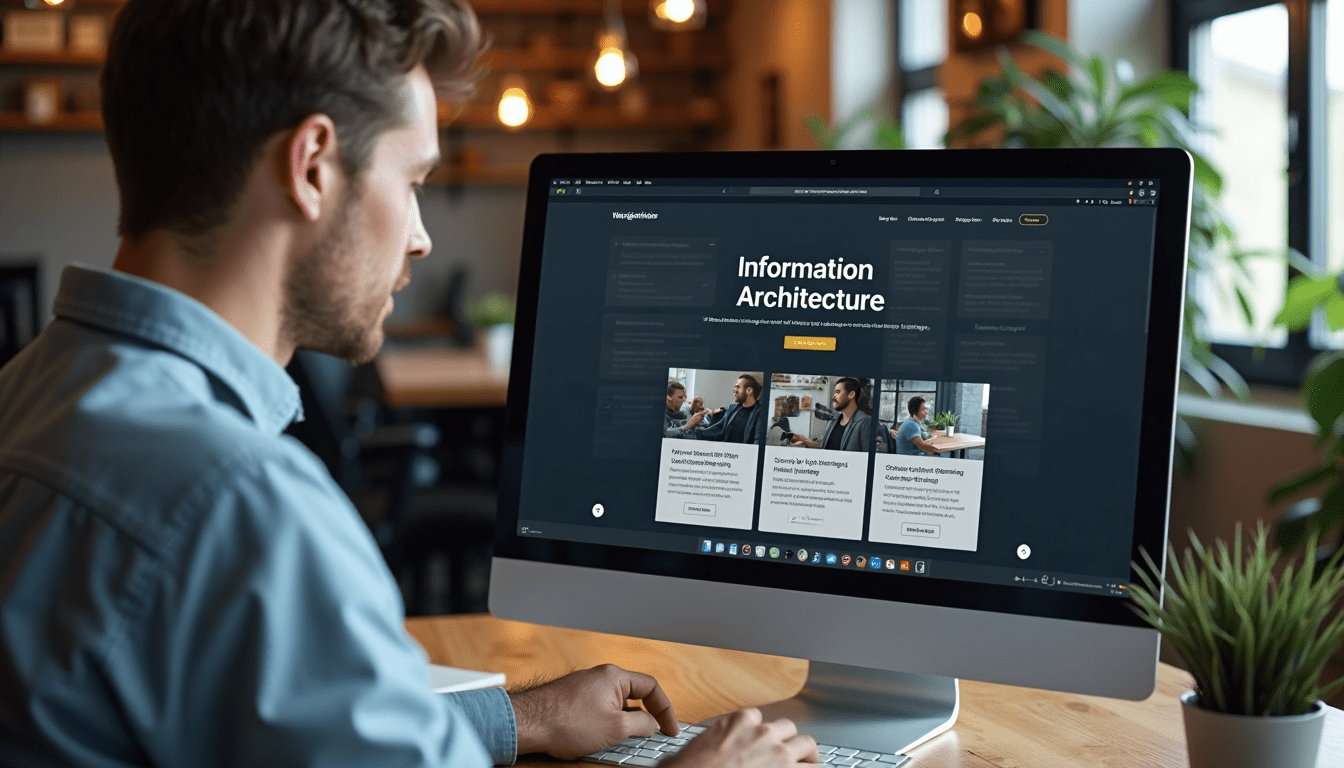
Technological Integration and Performance
Google’s Web Performance Guidelines recommend designing footers that contribute to overall website efficiency. In 2025, this means creating lightweight, responsive footer designs that load quickly and adapt seamlessly across different devices and screen sizes.
Research from Deloitte suggests that modern footers should incorporate:
- Schema Markup : Enhancing search engine understanding
- Mobile-Responsive Design : Ensuring consistent experience across devices
- Lightweight Code : Minimizing loading times
- Accessibility Compliance : Meeting WCAG guidelines
Branding and Trust Signals
Beyond functional elements, footers in 2025 serve as critical brand communication zones. Brand strategy experts at Forrester recommend using footer spaces to reinforce brand identity, build trust, and provide additional engagement opportunities.
Effective trust signals include:
- Certification Badges : Displaying security and quality credentials
- Social Proof : Showcasing customer testimonials or partnership logos
- Corporate Social Responsibility Information
- Newsletter Signup Forms : Facilitating ongoing communication
Successful footer design in 2025 requires a holistic approach that considers user experience, technological performance, and strategic brand communication. By treating the footer as a valuable digital asset rather than a passive page element, businesses can create more engaging, informative, and user-friendly websites that effectively support their digital marketing objectives.
Here is a summary table highlighting the key elements, technologies, and trust signals businesses should include in footers for optimal performance and engagement in 2025:
| Element Category | Key Features / Technologies | Purpose/Benefit |
|---|---|---|
| Navigation | Primary site sections, Search, Support contacts | Enhanced user journey, quick access |
| Technological Integration | Schema markup, Mobile-responsive, Lightweight code | Better SEO, performance, and accessibility |
| Branding & Trust Signals | Certification badges, Testimonials, Newsletters | Trust-building, brand reinforcement, engagement |
Local SEO Benefits for Colorado Businesses
Local SEO represents a critical strategy for Colorado businesses seeking to dominate their regional digital marketplace. By strategically optimizing website footers, companies can significantly enhance their online visibility, attract local customers, and outperform competitors in search engine results.
Establishing Local Digital Presence
Google My Business research indicates that businesses with consistent local online information are 70% more likely to attract customer engagement. For Colorado businesses, the footer serves as a powerful tool to communicate local relevance and credibility.
Local SEO optimization through footer design involves:
- Precise Location Information : Displaying complete business address
- Local Phone Numbers : Using area-specific contact details
- Geographic Keywords : Incorporating Colorado-specific terminology
- Regional Schema Markup : Enhancing search engine understanding of local context
Strategic Local Link Building
Moz Local SEO Guidelines emphasize the importance of strategic link placement in website footers. For Colorado businesses, this means creating a network of locally relevant connections that signal geographic authenticity to search algorithms.
Effective local link strategies include:
- Local Chamber of Commerce Links
- Regional Business Association Connections
- Community Event Partnerships
- Local Directory Citations
Enhanced User Trust and Engagement
Search Engine Journal reports that businesses displaying consistent local information experience up to 50% higher user trust and engagement rates. The footer becomes a critical zone for communicating business legitimacy and regional presence.
Key trust-building footer elements for Colorado businesses include:
- Localized Testimonials
- Regional Certification Badges
- Community Involvement Indicators
- Local Awards and Recognitions
For quick reference, here’s a summary table of essential local SEO features to include in footers for Colorado businesses seeking to boost engagement and rankings:
| Local SEO Feature | Example/Description | Key Benefit |
|---|---|---|
| Exact Address & Phone Number | 123 Main St, Denver, CO – (303) 555… | Proves local presence, aids search rankings |
| Geographic Keywords | “Colorado digital marketing”, “Denver” | Attracts region-specific searches |
| Local Links | Chamber of Commerce, local directories | Signals location authority to engines |
| Localized Trust Signals | Regional badges, local testimonials | Boosts community trust and authenticity |
| Regional Schema Markup | JSON-LD with address ®gion tags | Enhanced SERP display for local listings |
By treating the footer as a strategic local SEO asset, Colorado businesses can create a powerful digital marketing tool that simultaneously improves search rankings, builds regional credibility, and provides valuable information to potential customers. The footer transforms from a simple page element into a sophisticated communication platform that reflects the unique character and capabilities of local enterprises.
Successful local SEO through footer optimization requires a nuanced approach that balances technical requirements with authentic regional representation. For Colorado businesses, this means crafting a footer that not only meets search engine guidelines but also resonates with the local community’s expectations and digital behaviors.
Common Footer Mistakes and How to Avoid Them
Website footers represent a critical digital touchpoint that can significantly impact user experience and search engine performance. Understanding and avoiding common design pitfalls is essential for businesses seeking to create effective, user-friendly digital interfaces in 2025.
Overcrowding and Information Overload
UX research from Nielsen Norman Group reveals that cluttered footers can overwhelm users and reduce website usability. Many businesses make the mistake of treating the footer as a dumping ground for every possible link and piece of information.
Common overcrowding errors include:
- Excessive Link Clusters : Cramming too many links into small spaces
- Redundant Navigation : Repeating menu items unnecessarily
- Complex Hierarchical Structures : Creating confusing multi-level link systems
- Visual Noise : Using multiple font styles and competing design elements
Technical and Performance Limitations
Google’s Web Performance Guidelines highlight critical technical mistakes that can negatively impact website functionality. Poorly constructed footers can significantly slow down page loading times and create accessibility challenges.
Key technical pitfalls to avoid:
- Non-Responsive Design : Footers that don’t adapt to different screen sizes
- Heavy JavaScript Implementations : Unnecessarily complex footer scripts
- Lack of Semantic HTML : Using incorrect markup that confuses search engines
- Missing Accessibility Features : Failing to support screen readers and assistive technologies
Strategic and Compliance Errors
Web Accessibility Initiative guidelines emphasize the importance of creating footers that not only look good but also meet legal and ethical standards. Many businesses overlook critical compliance and strategic considerations.
Strategic mistakes include:
- Incomplete Contact Information : Failing to provide clear communication channels
- Outdated Legal Disclaimers : Not updating privacy policies and terms of service
- Inconsistent Branding : Design elements that deviate from overall website identity
- Missing Trust Signals : Lack of security badges or certification indicators
Below is a checklist table summarizing common footer mistakes and how to avoid them, to help businesses ensure their footers are optimized for usability, performance, and compliance:
| Common Mistake Type | Example Issue | Impact | Avoidance Strategy |
|---|---|---|---|
| Overcrowding | Too many links, visual noise | User overwhelm, confusion | Use concise, logical groupings |
| Technical Limitation | Non-responsive design, heavy scripts | Slow load, poor mobile UX | Implement lightweight, adaptive code |
| Compliance/Strategy Error | Outdated disclaimers, missing contacts | Legal risk, lost trust | Regularly update, maintain details |
| Incomplete Branding/Trust | No badges, inconsistent styles | Reduced trust, weak branding | Add certifications, align with brand |
Avoiding these common footer mistakes requires a holistic approach that balances design aesthetics, technical performance, and strategic communication. Businesses must view the footer as a sophisticated digital asset that serves multiple functions: navigation, brand representation, user support, and search engine optimization.
Successful footer design in 2025 demands a meticulous approach that prioritizes user experience, technical efficiency, and strategic communication. By carefully addressing potential pitfalls and implementing best practices, businesses can transform their footers from passive page elements into powerful digital communication tools that enhance overall website effectiveness.
Frequently Asked Questions
What is website footer optimization?
Website footer optimization involves enhancing the footer section of a website to improve user experience, navigation, and search engine visibility. It includes organizing information, incorporating trust signals, and ensuring responsiveness.
Why is footer design important for U.S. businesses?
Footer design is crucial for U.S. businesses as it can significantly impact user engagement and trust. A well-structured footer helps guide navigation, provides essential information, and contributes to local SEO efforts.
How can I improve my website footer for local SEO?
To improve your website footer for local SEO, include precise location information, local phone numbers, geographic keywords, and local links such as chamber of commerce or directory citations. This helps enhance your visibility to local customers.
What common mistakes should I avoid in footer design?
Common footer mistakes to avoid include overcrowding with too many links, non-responsive design that doesn’t adapt to mobile devices, and missing legal information like privacy policies. Keeping it clean and functional is key.
Ready to Unlock Results with Footer Optimization?
Your website footer is more than a spot for legal links. In 2025, it is a secret weapon for building trust, boosting local SEO, and turning visitors into loyal customers. If you are worried about outdated design, poor navigation, or missing local signals that drive real engagement, you are not alone. Many Colorado businesses face these exact challenges. You need a footer that not only looks good, but also works hard for your growth.
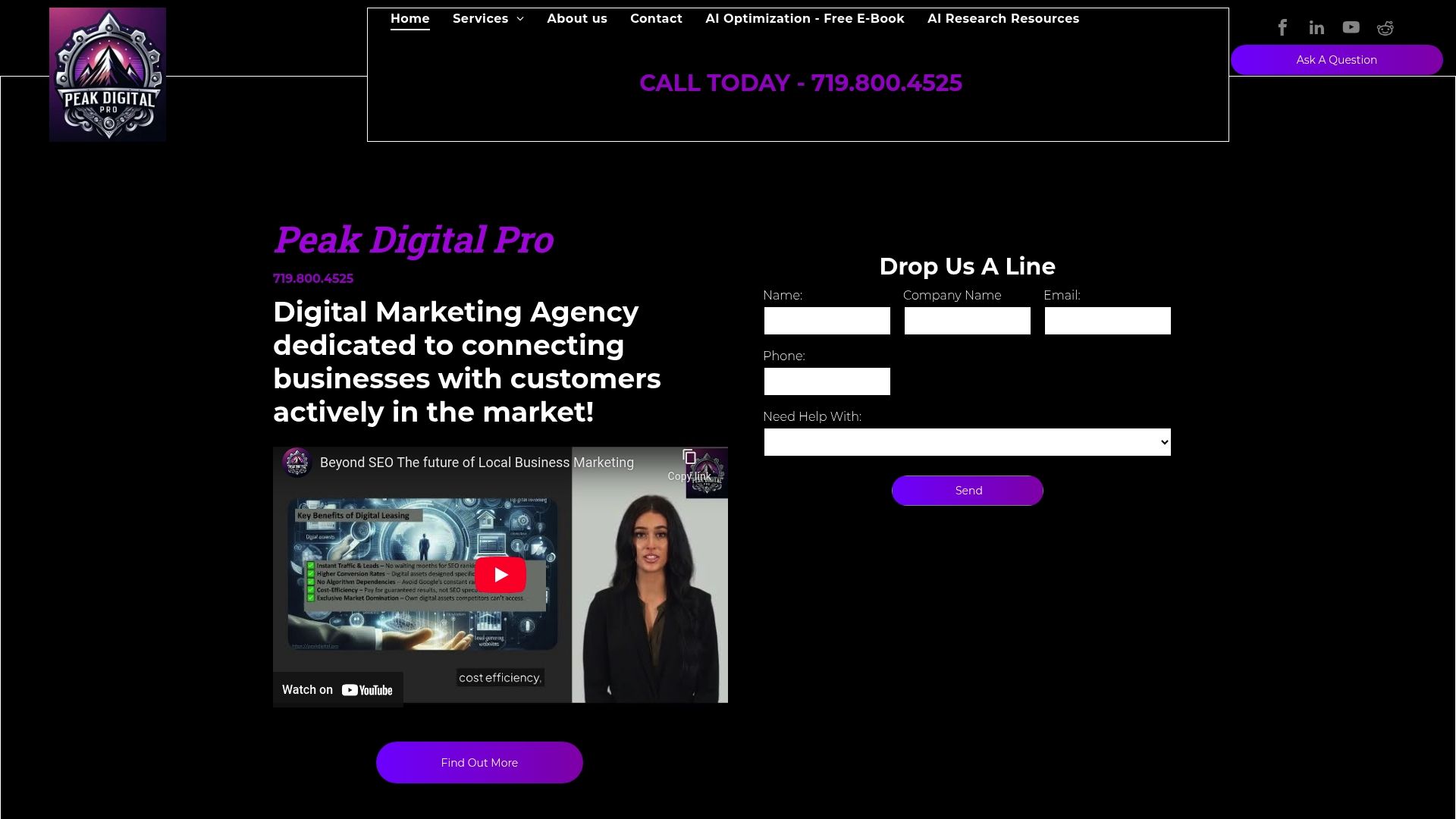
See how our digital marketing experts can transform your entire web presence starting from the ground up. We use the strategies from this very article and tailor them to Colorado businesses just like yours. Today is the day to gain an edge over your competitors. Book your free strategy call at Peak Digital Pro and let us help you become a recognized leader in your local market.
